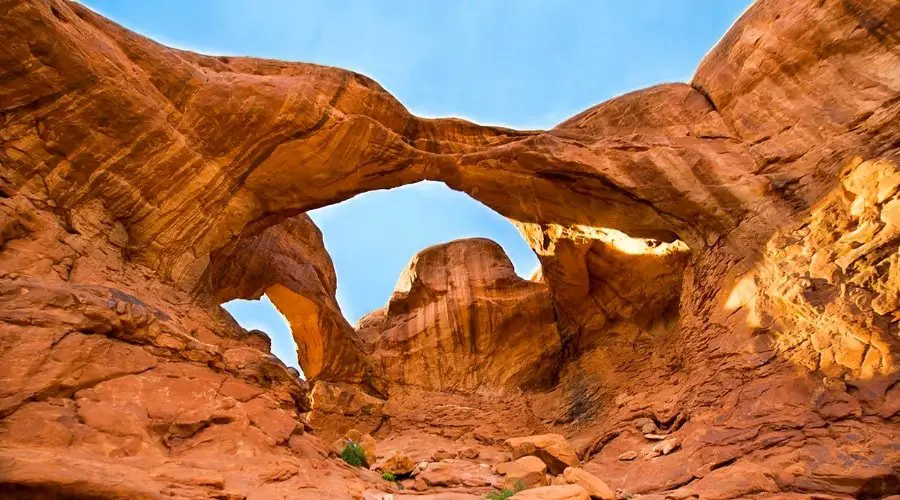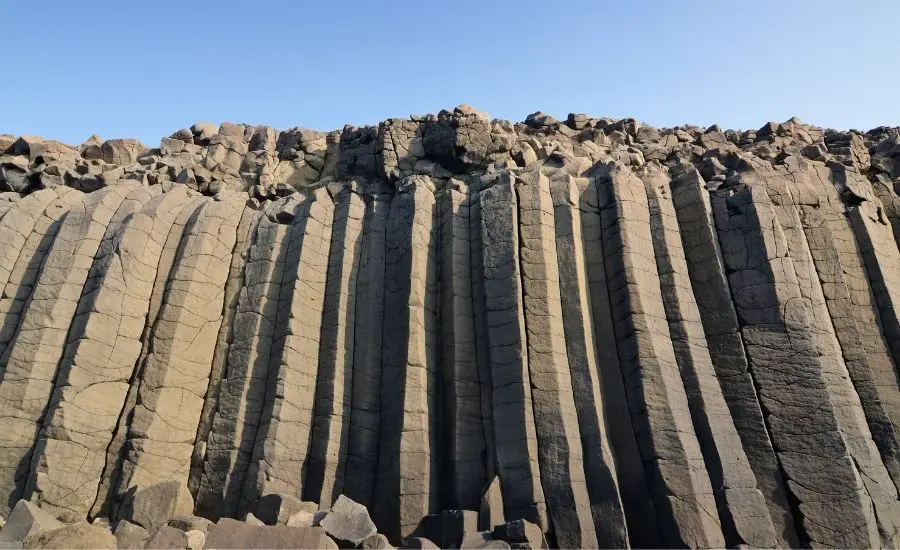If you have ever been climbing outside you know that the type of rock you are climbing on drastically impacts your experience. Slipping off holds because the rock is too polished to get a grip on is annoying for any climber. As a geologist, I was curious to see what types of rocks are commonly climbed and if there is a best one for climbing. Here is what I found out:
Granite, sandstone, and limestone are the three most commonly climbed rocks in the world. On average, granite is the best rock for trad climbing of the three. Sandstone is the best rock for top roping, bouldering, and low grade sport climbing. Limestone is the best rock for difficult overhanging sport climbs.
Of course there is a lot of personal opinion that goes into saying which rock is the best for what type of climbing. I would be remiss to say the above statement holds true for every single climber out there. That said, each rock has certain characteristics that lend themselves to be better than others for each climbing discipline. These characteristics are explored more in depth below.
If you are a big geology nerd like myself and want to learn more how all rock types affect climbing, I recommend checking out this book on Amazon!
Differences Between The Three Main Rock Types In Climbing

Each of the three most commonly climbed rocks in the world provide climbers with unique characteristics for climbing. The main differences in these rocks as they translate over into the climbing world are explored below.
Granite vs Sandstone Climbing Characteristics
Granite is an intrusive igneous rock of felsic composition while sandstone is a sedimentary rock composed of sand sized grains of rock fragments held together by a cementing material.
As such, granite is typically harder and stronger than sandstone. In addition to this, granites have less pore space and are much quicker to dry out than sandstones. Granite’s crystalline structure, low porosity, and felsic composition lead it to erode slowly and resist weathering better than sandstone.
Granite rocks will typically be less featured than sandstone rocks and typically provide climbers with great slab and crack climbing. Sandstone holds provide climbers with better friction and grip on the rock whereas granite holds are typically sharper and can be slippery. To learn more about the intricacies of climbing on granite check out my article here.
Granite vs Limestone Climbing Characteristics

Limestone, like sandstone, is a sedimentary rock. Limestones primarily consist of calcium carbonate and are predominantly formed on the seafloor. Because limestones are predominantly formed on the seafloor, they tend to have marine fossils. These fossils can provide climbers with excellent grip and unique features to look at when climbing.
Limestone is typically weaker and more featured than granite. This is because calcium carbonate dissolves in weakly acidic water (such as rain water) and causes the limestone to erode rapidly. This is in stark contrast to granite which resists weathering quite well.
Most granite routes tend to be slabby (less than vertical) or vertical whereas the majority of limestone routes are vertical to overhanging. Vertical and slabby limestones tend to become polished and more slick than granites. Overhanging limestones tend to erode slower and maintain their climber friendly grip and texture for longer. To learn more about the intricacies of climbing on limestone check out my article here.
Sandstone vs Limestone Climbing Characteristics
While both sandstone and limestone are sedimentary rocks, they provide climbers with different climbing features.
Pristine limestone is commonly less porous than sandstone and will typically be stronger than it as well. Both rocks have climber friendly textures and grips when unweathered and in good condition. That said, vertical sandstones tend to maintain their friction and grip better than vertical limestones which can become slippery.
Limestones and sandstones both provide climbers heavily featured and overhanging routes. Crack climbing is more common on sandstones and is not typically associated with limestone climbing. To learn more about climbing on sandstone check out my article here.
Characteristics of Other Commonly Climbed Rocks

Before we get into how the rocks’ characteristics apply to specific climbing disciplines, I will briefly go through a couple honorable mentions. Basalt, rhyolite, and conglomerate rocks are all commonly climbed rocks as well. Basalt and rhyolite are both igneous rocks and are more similar to granite’s climbing characteristics than sandstone or limestone. Conglomerate is a sedimentary rock and is more similar to sandstone’s climbing characteristics than limestone or granite.
While the honorable mentions can be similar to the three main rocks, they each have their own unique features for climbing such as basalt’s columnar formations. I recommend you check out my articles that detail the intricacies of basalt and rhyolite climbing to see how they differ from granite.
The Best Rock Type For Different Climbing Disciplines
As mentioned above, the characteristics of each rock lend themselves to be better for some climbing disciplines than others. That said, there are always exceptions to the rule and each rock has the capability of providing climbers with awesome climbing experiences in every discipline.
Best Rock For Trad Climbing
Trad climbing requires climbers to place protection in the rock as they make their way up the route. As such, it becomes incredibly important for the rock they are climbing on to be strong and provide them with good places to place their protection in. Placing protection in a weak rock is a quick way to get seriously injured or worse while trad climbing.
As a general rule, granite is the best rock for trad climbing due to its strong and solid composition and the presence of ample cracks to place protection in.
It is typically not recommended to trad climb sandstone or limestone unless you know for sure the route is good and provides places for protection. The weak and sometimes fragile nature of sandstone and limestone make them not ideal for trad climbing.
Best Rock For Top Roping
Top roping involves climbers using set anchors at the top of a route to be belayed from. As such, vertical and near vertical rocks are commonly top roped on with overhanging and slabby routes being less popular.
On average, pristine sandstone is the best rock for top roping due its grippy texture and ample amount of features to grab onto.
Vertical limestone is typically more polished and sharp than vertical sandstone making the average top rope route less ideal than the average sandstone route. While vertical granite can be great to top rope and practice crack climbing on, sandstone is also able to provide climbers with cracks to practice on as well. Sandstone’s texture on vertical routes is hard for any rock to match.
Best Rock For Sport Climbing

Difficult sport climbing typically involves overhanging routes and small holds. As such, the ideal rock for it needs to be strong and textured so the climbers can grip it and be confident in it.
On average, pristine limestone is the best rock for difficult sport climbs due to its climber-friendly texture and solid composition on overhanging routes.
Limestone is a pretty broad term that encompasses a wide variety of different rocks. Tufa is one of these rocks classified as a type of limestone. Tufa provides climbers with one-of-a-kind holds and is so good that it even has climbing gym holds molded after it.
Best Rock For Bouldering
On average, pristine sandstone is the best rock for bouldering due to its grippy texture and heavily featured nature. Limestone and granite can also provide climbers with excellent bouldering problems.
In my mind, it really depends on the area that the bouldering is taking place. If you are in the right place, granite or limestone boulders can be better than certain sandstone boulder problems. However, on average, sandstone typically provides more features and is better textured for bouldering problems.
